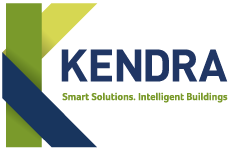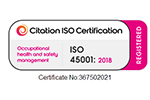Safety Alert – Covid-19 Advice
This Safety Alert Document outlines the current understanding of the possible routes of transmission of the COVID-19 virus (including airborne transmission) and possible responses that Building Services Engineers can adopt to reduce transmission risks in the built environment.
The current coronavirus (COVID-19) outbreak continues to develop rapidly with relevant advice being updated regularly and an increasing body of research being published. Government, NHS and Public Health England websites, as well as those of the devolved administrations should be consulted for current policy across the UK. Kendra have taken guidance from CIBSE who have recently provided guidance on HVAC operational considerations in light of the current COVID-19 understanding from Public Health England.
CIBSE is the UK member of REHVA, the European Federation of Heating and Ventilation Engineers. REHVA has developed a COVID-19 guidance webpage giving information and guidance and has developed a bibliography on how to operate and use building services to minimise the spread of the virus through HVAC or plumbing systems.
Full details can be found here: https://www.cibse.org/coronavirus-covid-19/coronavirus-covid-19-and-hvac-systems
Current Public Health England guidance on infection control states that “The transmission of COVID-19 is thought to occur mainly through respiratory droplets generated by coughing and sneezing, and through contact with contaminated surfaces. The predominant modes of transmission are assumed to be droplet and contact.” (See section 2.1 of the guide).
Droplets will generally fall out of the airstream within a short distance (depending on airflow speed and direction), hence the guidance to remain 2m apart. However, these may evaporate, reducing in size and mass and travel further in air streams, contaminating surfaces and increasing the risk of airborne transmission.
While airborne transmission is not thought to be a primary route of transmission, there is an emerging and growing body of evidence that COVID-19 can also be spread through the air, particularly in poorly ventilated indoor spaces, and that ventilation provision in buildings should be reviewed in the light of this.
Emerging Findings of COVID-19
Proving modes of transmission during an outbreak is difficult. However, multiple recent studies are showing evidence of indirect contact (which may be linked to airborne spread and have also linked airflow patterns to infection cases.
This has been particularly the case in high occupancy areas, in spaces with little fresh air, and when people generate a lot of aerosols (e.g. shouting and singing). Given the growing body of evidence suggesting airborne transmission may be a route of infection and knowledge of aerosol generation and transport it is prudent to ensure ventilation is operating appropriately to protect occupants.
The following measures, using outside air wherever possible, should help to reduce the risks from airborne transmission.
Helping to Prevent the spread of COVID-19
The primary mechanisms for preventing the transmission of coronavirus remain;
- Regular, thorough handwashing using soap and hot water for at least 20 seconds.
- Strict adherence to social distancing guidelines.
- Staying at home.
Additional mechanisms for preventing the transmission of coronavirus through HVAC;
The Objective
The primary objective is to maximise the air exchange rate with outside air and to minimize
the risk of any pockets of stagnant air.
It is recognised that Dilution of internal air should reduce any risk of potential airborne viral
transmission by reducing exposure time to any airborne viral aerosols, and also reduce the
chance for these aerosols to settle on surfaces. Evidence shows that virus can survive
on some surfaces for at least 72 hours and hence any action to limit surface contamination
is beneficial.
- In buildings with mechanical ventilation systems extended operation times are recommended.
- It is recommended that any ventilation or air conditioning system that normally runs with a recirculation mode should now be set up to run on full outside air where this is possible.
- In demand control systems CO2 set points should be set to 400ppm to increase the delivery of outside air.
- Recirculation of air between spaces, rooms or zones occupied by different people should be avoided.
- Systems serving a single space, partial recirculation of air within that space, such asthrough a local fan coil unit, is less of a concern.
Conclusion
- Ventilation should be kept on for longer, maximising fresh/outside air, with lower ventilation rates when people are absent.
- It is not recommended to switch ventilation systems off in any buildings, even those temporarily vacated, but to operate them continuously at reduced speeds.
Considerations
On colder days consideration must be given to human behavioural responses. A ventilation system on full outside air which is not adequately heated may create discomfort draughts. This may lead to users seeking to turn the system off, or with naturally ventilated spaces users may close vents or windows. These actions will reduce the air exchange rate and dilution of any contaminants (and not just any viral contamination) and overcome the primary objective to maximise the air exchange rate with outside air.
It is important that where users can intervene in the control of the ventilation that they are made aware of the benefit of these measures.
Energy;
The potential benefit to public health at this time outweighs the reduction in energy efficiency caused by not recirculating air.
Maintenance
Airborne contaminants may be minimised by proper and effective filtration and regular maintenance of plant.
Risks of Maintenance;
Viral material that settles in ductwork will become unviable over time. In the event that some viral material entered ventilation and air-conditioning systems prior to buildings being vacated due to the current restrictions, it is extremely unlikely that that material will pose any risk when those buildings are re-occupied.
Where cleaning or planned maintenance of ventilation systems is required, such as in catering premises, it should be undertaken in line with agreed industry guidance, including that relating to site operations under social distancing requirements. Appropriate PPE should be worn and all materials, including old filters, should be carefully
bagged and disposed of safely.









